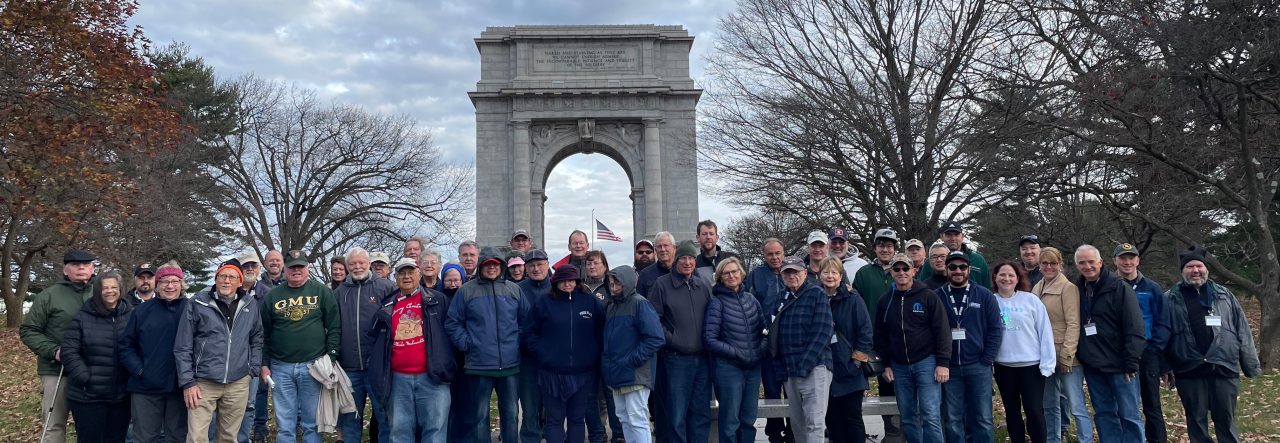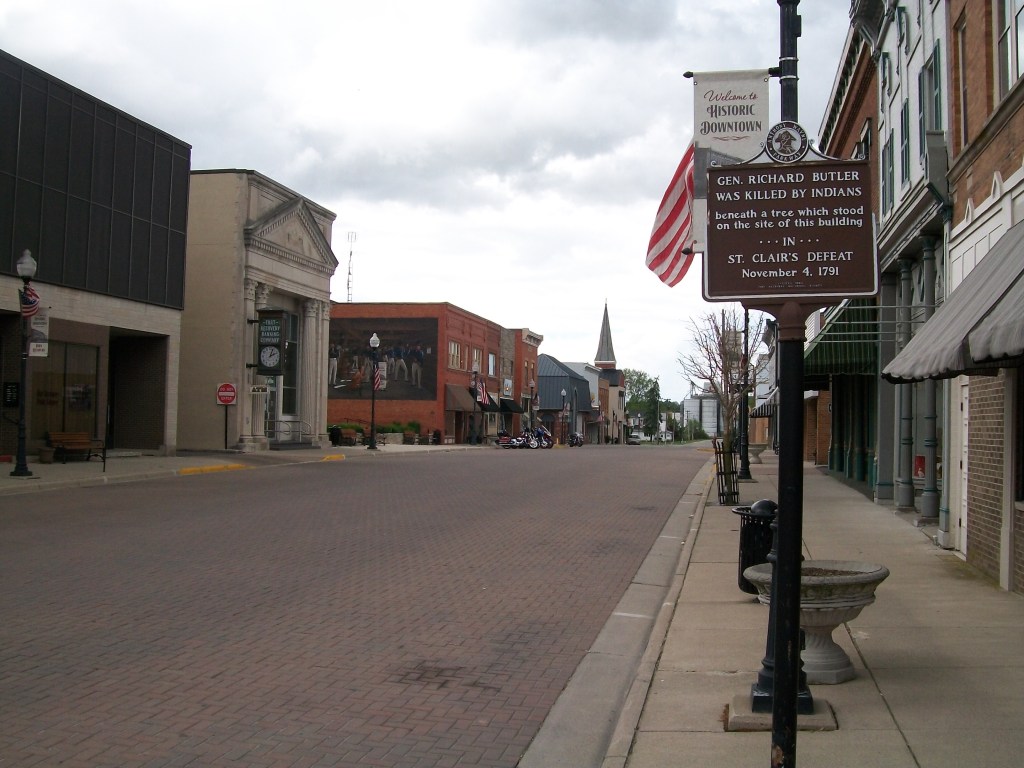Emerging Revolutionary War welcomes guest historian Joshua Shepherd

For most history enthusiasts, a visit to a battlefield is simply a diversion that very often takes place during an annual vacation. But the pleasant surroundings of America’s historic parks belie the terrifying sights that greeted a battlefield’s first visitors.
On December 24, 1793, a detachment of American troops under the command of Major Henry Burbeck arrived at an insignificant knoll deep in the wilderness of present-day Ohio. Tasked with constructing a timber fortification on the site, the troops first had to attend to the unenviable task of clearing the remains of over six hundred men who had been killed there two years earlier. Burbeck reported that the battlefield “had a very melancholy appearance – nearly in the space of 350 yards lay 500 skull bones – 300 of which we buried.” Most of the skulls, it was reported, appeared to have been smashed by tomahawk blows.
Private George Will, Jr. would never forget the horrific experience of bedding down for a fitful rest that Christmas Eve. “When we went to lay down in our tents at night,” he recalled, “we had to scrape the bones together and carry them out to make our beds.”
Will and his fellow soldiers had arrived at the scene of one of the worst disasters in American military history. Following years of mounting tensions between the fledgling United States and the native tribes of the Northwest Territory, President George Washington ordered a punitive expedition into the region in 1791. Placed under the command of Maj. Gen. Arthur St. Clair, the expedition was composed of a mix of regular troops, short-term levies, and raw militia.
St. Clair’s ultimate target was the complex of native villages near the headwaters of the Maumee River – modern Fort Wayne, Indiana – but his army was compromised by poor supply, bad leadership, and even worse morale. By the evening of November 3, 1791, St. Clair’s troops arrived at a small hill overlooking the narrow headwaters of the Wabash River, still sixty miles shy of their objective. After an exhausting day’s march, the troops pitched camp on a few cleared acres of high ground but neglected to erect improvised breastworks around the position.
Disaster struck at dawn the following morning, when about 1,000 warriors – largely Miami, Shawnee, Delaware, and Wyandot – struck the demoralized Americans. Lashing around the flanks of the exposed encampment, the tribesmen surrounded the position and unleashed a galling crossfire that felled scores of soldiers in minutes. After three hours of lopsided fighting, St. Clair extricated what remained of his command. At least 630 men died in the fighting, over 280 were wounded. It was the worst defeat that the United States would suffer in over a century of Indian conflict.
Two years later, the Americans returned under the command of Maj. Gen. “Mad” Anthony Wayne, a former brigade commander under George Washington. Wayne occupied the site of the St. Clair debacle and ordered the construction of a military installation, which was appropriately christened Fort Recovery.
Another clash of arms would unfold there the following summer. Early on the morning of June 30, 1794, an allied Chickasaw scout reported that he had seen footprints which indicated the presence of a large enemy force. Captain Alexander Gibson, the fort’s commander, inexplicably dismissed the intelligence.
It was a fatal mistake. When a packhorse convoy departed the fort later that morning, bedlam erupted. The drovers were fired on, and Major William McMahon charged out of the fort at the head of a detachment of dragoons. Running into a devastating ambush, dozens of horsemen were dropped in a hail of gunfire. The survivors, with hundreds of tribesmen on their heels, barely made it back to the safety of the fort.
Exuberant after the successful ambush, a number of warriors made an impetuous attack on the stockade, where they were met with a punishing fire from the fort and took heavy casualties. A brief siege ensued, in which the Indians were unable to dislodge the American garrison.
In the past two centuries west central Ohio has changed dramatically. Immense hardwood forests have been cleared for vast fields of corn and soybeans, and the landscape is dotted with tidy farmsteads. The site of St. Clair’s Defeat is virtually unrecognizable from how it appeared in 1791. The battlefield itself, as well as the site of Wayne’s Fort Recovery, is now occupied by the village of Fort Recovery, Ohio. The modern village’s downtown, home to small shops and a quaint brick street, sits atop the location of St. Clair’s encampment. The Wabash River, which once flowed beneath Fort Recovery’s stockade, has been rechanneled, leaving a dry depression where the watercourse once flowed.
Despite drastic changes to the terrain, Fort Recovery offers visitors an outstanding opportunity to experience the locale’s rich history. The best starting point for any visit is the Fort Recovery State Museum. The recently remodeled museum offers a short orientation film and well-designed exhibit galleries. The main gallery chronicles the story of the Northwest Territory, St. Clair’s Defeat, and Wayne’s campaign with a fine collection of artifacts unearthed from Fort Recovery and nearby sites. A smaller gallery, which exhibits a superb collection of stone artifacts turned up by local farmers and collectors, highlights the pre-Columbian native cultures which originally inhabited the region.
A self-guided walking tour of the battlefield, with newly installed interpretive markers, begins outside the museum and takes visitors on a one-and-a-half-mile trail through Fort Recovery, explaining the history of the site with fifteen wayside markers. Tour stops include narratives covering St. Clair’s Defeat, the massacre of female camp followers, the Battle of Fort Recovery, and eighteenth-century weaponry. The museum is home to two reconstructed blockhouses and a portion of connecting stockade. Downtown, two recently commissioned murals illustrate the action which took place on the locale.
One of the highlights of the walking tour is the 101’ tall obelisk erected as a memorial to the fallen of both of the battles which took place on the site. The memorial shaft also serves as the final resting place of the battles’ unknown dead, whose remains were interred under the monument when it was built in 1912.
Fort Recovery is an out of the way village that’s small on size but big on history, and well worth the visit if you’re in the area.




